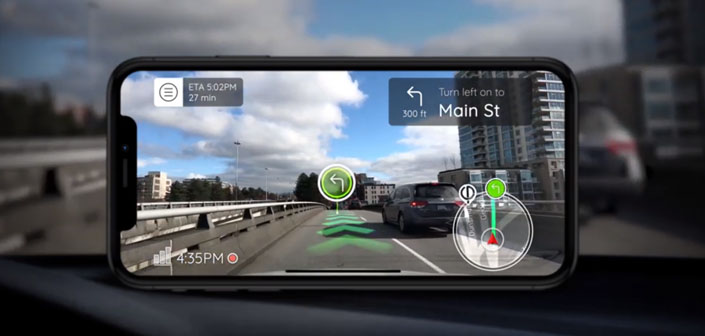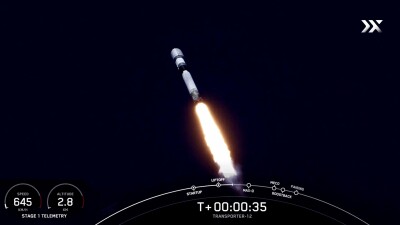When you drive with a GPS device, it is sometimes hard to keep your eyes on the road when there are multiple roads you could turn down, but the GPS doesn’t clearly show which one you should take. This confusion can result in an accident if you don’t notice the car in front of you braking, or someone decides to cross the street at that exact moment.
California-based Phiar wants to tackle this specific issue by combining deep learning artificial intelligence (AI) and augmented reality (AR) to deliver a new form of vehicle navigation platform for smartphones.
Instead of presenting drivers with a 2D/3D map, like Google Maps and other leading solutions do, Phiar’s solution uses the smartphone’s camera to show you the real world in real time, all while mapping a green line on top of the road to show you the way. When you approach your turn, the app will show an icon on top of the green line, indicating your next step clearly.
“The idea came after taking too many wrong turns on the streets of Boston,” said the company’s CEO Chen-Ping Yu in a statement. “Trying to interpret directions from a two-dimensional map, especially at high speeds, is as difficult as it is dangerous. Navigation should be convenient and straightforward, and what we’re building is going to help people reach their destination faster and safer.”
Of course, using the app doesn’t mean it takes away the need to look at the smartphone, but this time around you’re still keeping your eyes on the road—albeit a smaller version of it. While Phiar’s AR keeps you on course to your location, the AI tracks and identifies moving targets, including pedestrians. If the app detects a potential accident, it sends auditory and visual cues to the driver to call his attention to what’s ahead.
To help them further develop the technology, the five-person team recently received a $3M investment from the Venture Reality Fund, Norwest Venture Partners, Anorak Ventures, Mayfield Fund, Zeno Ventures, Cross Culture Ventures, GFR Fund, Y Combinator, InnoLinks Ventures, and Half Court Ventures.
In the future, the company might bring the technology to the automotive industry and integrate it directly with the vehicles’ systems. Right now, the plan is to release their consumer smartphone app in mid-2019.






